We love quick science demonstrations that can quickly illustrate scientific concepts. One of our favorite instant ice experiments is making frost in a jar (if you don’ t have a jar, you can also make frost in a can).
We love doing this activity as a winter STEM activity, because we don’t get a lot of snow and ice where we live in Texas, but we still want the winter wonderland experience!
This winter science experiment shows how with the right conditions, condensation turns to frost!
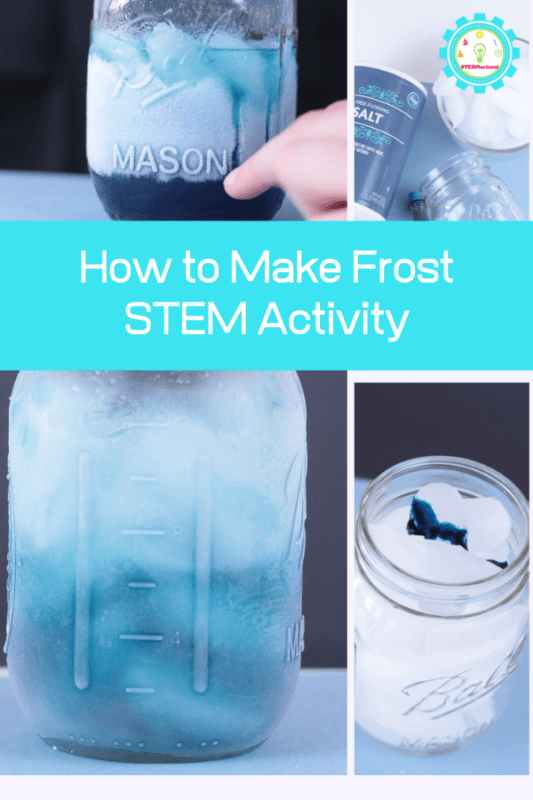
Making Frost in a Jar
Keep reading to learn about frost in a jar science and making frost in a jar.
Frost in a Jar Science
Wondering how the frost in a jar experiment works? This is the basic frost in a jar science.
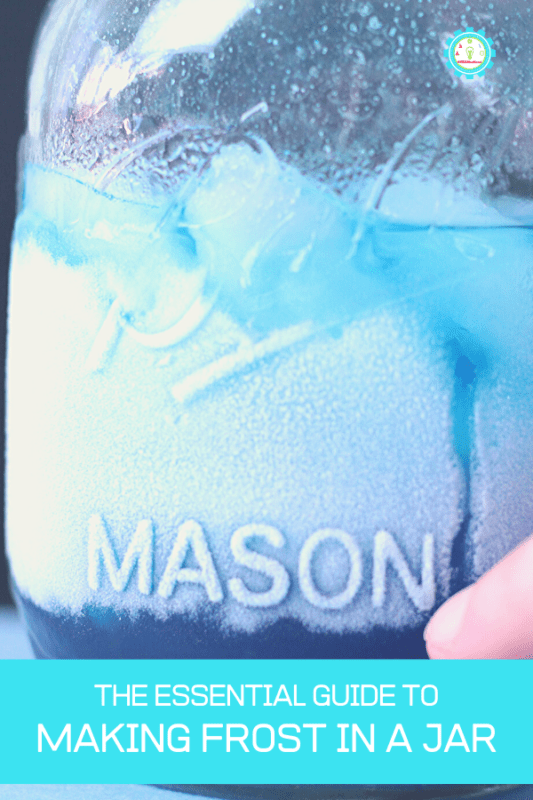
How Does Frost Form?
Air contains water particles known as water vapor (which is also what clouds are made of). Cold water can’t hold as much moisture as warm air, so when the air cools, water vapor clings to surfaces and creates condensation.
When the solid surface is below freezing, the condensation turns to frost.
Frost is a thin ice layer that forms on a solid surface (you’ll often see it on windows, roofs, grass, and cars). Frost forms when the air temperature is slightly above freezing, while the surface of the solid is below freezing.
When the water vapor comes in contact with the freezing surface, it causes the vapor to change from vapor to ice and forms a thin layer of ice crystals.
You’ll also want to try our other winter science experiments!
How Does Frost Form above Freezing?
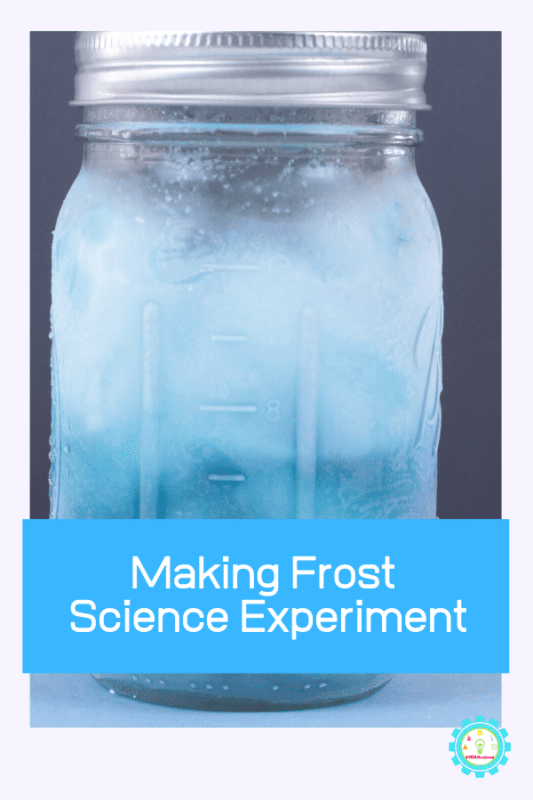
A jar of ice water will cause the glass of the jar to hover right around freezing temperature. This is cold enough to make condensation, but not frost.
So, how does the frost get there?
Frost is able to form with the addition of salt.
Salt lowers the melting point of ice (meaning that it starts to melt even at freezing temperatures). When this happens, the glass jar actually falls below freezing.
When the glass freezes, the condensation turns to frost.
That’s why you can see the condensation change to frost right before your eyes after adding salt to the jar.
At What Temperature Does Frost Form?
Frost forms when a deposit of water vapor touches a surface that is cooler than 0° Celsius (32° Fahrenheit).
Frost Experiment Variations
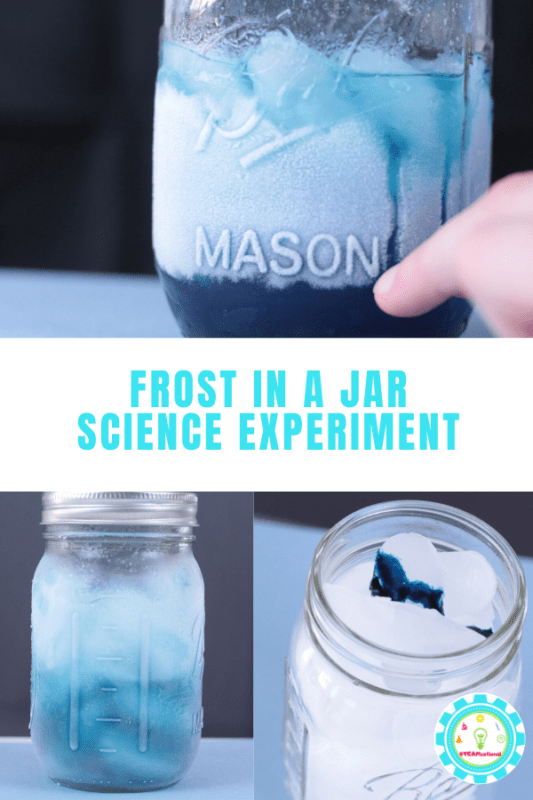
If you want to do this frost science experiment as a true experiment instead of a demonstration, you must test variables. Here are some things to test:
- How long it takes different amounts of salt to create frost.
- If the amount of ice changes how quickly frost forms.
- If other frozen liquids could be used to make frost.
- If frost will ever form without the use of salt.
- If shaking the jar changes how quickly the frost forms.
Making Frost in a Jar
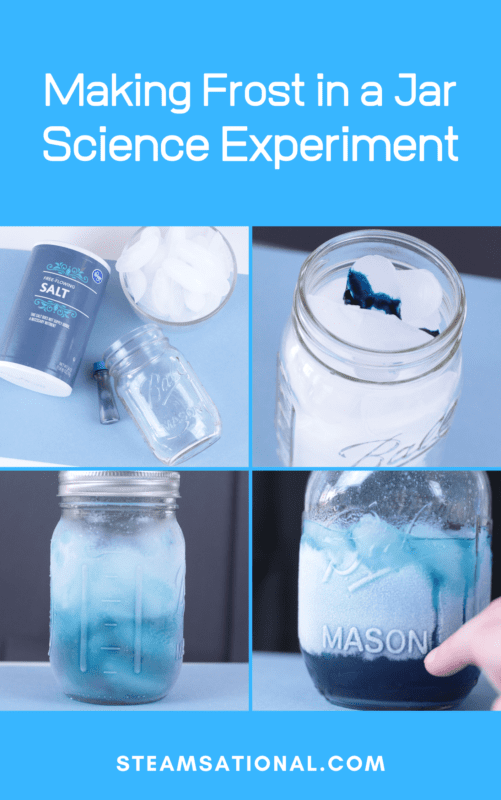
Follow along with these simple steps to making frost! It’s easy, and kids will have a blast with this cold-weather science experiment.
Frost Jar Supplies
For this winter science experiment you will need:
- Glass mason jar (we usually order ours from Amazon)
- Ice
- Salt
- Blue food coloring (we like these colors)
Making frost Experiment Directions
The secret to making thick frost is adding just a bit of water to the jar in addition to the ice.
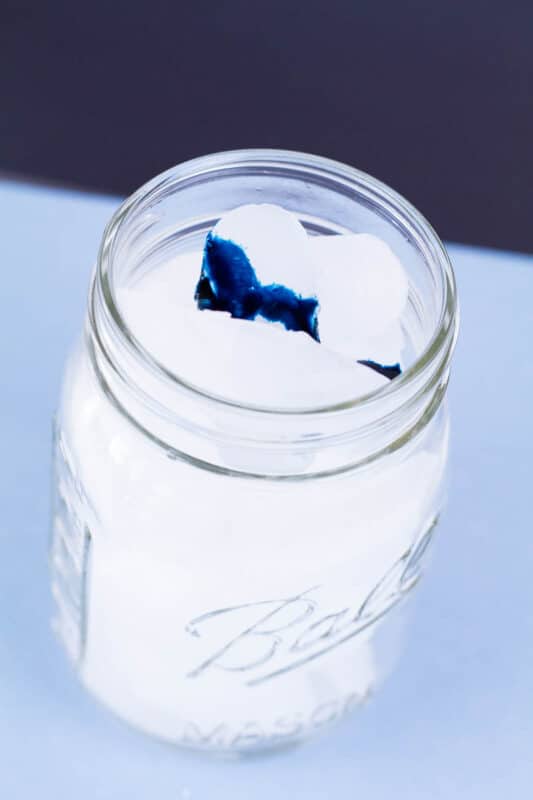
In a small bowl, color some water blue and set it aside.
Fill your mason jar about 3/4 of the way full of crushed ice (crushed ice will freeze faster than larger chunks).
Add a half-inch layer of salt.
Pour the blue water over the salt.
The frost should start to form in just a few seconds.
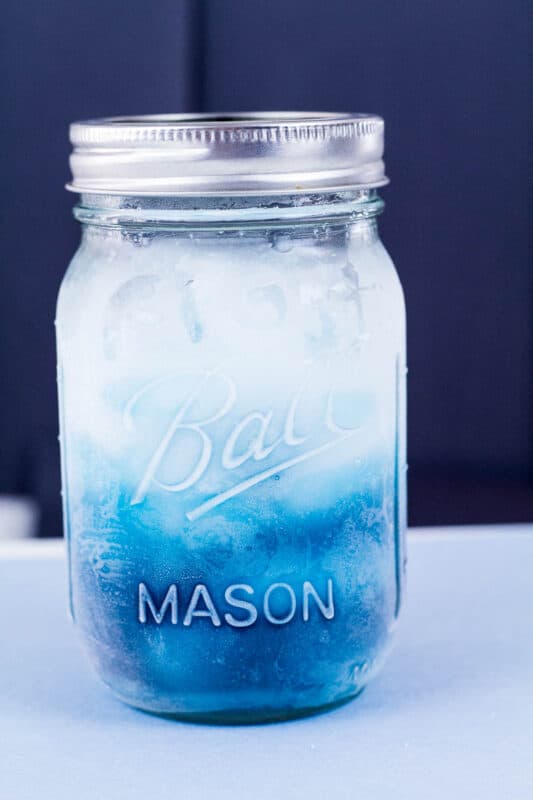
If you’re super impatient, you can add a lid to the jar and give it a quick shake. This will speed things along.
At first, you may not be able to tell that the condensation has become frost.
But after about 3 minutes, you’ll see a thick layer of ice crystals on the surface of the jar.
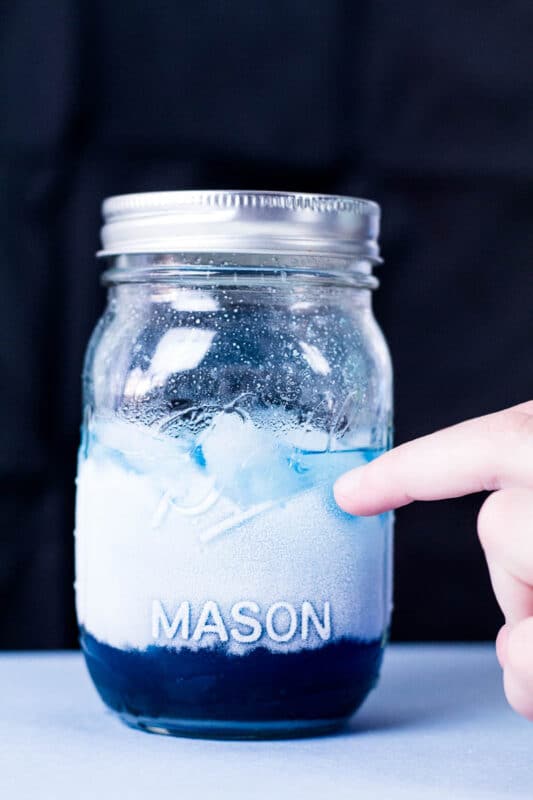
Don’t forget to record your data in a science notebook!
More Winter Science Experiments
If you like this experiment, you might also like making a magnifying glass from ice, doing the hot ice science experiment, and making a snowstorm in a jar. Try this rainbow ice activity, too!

